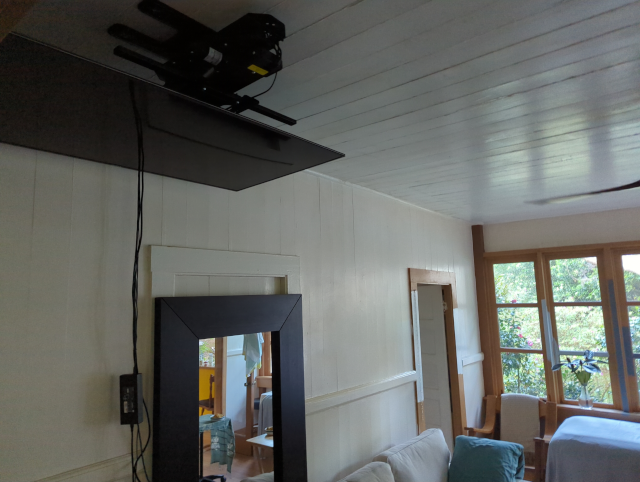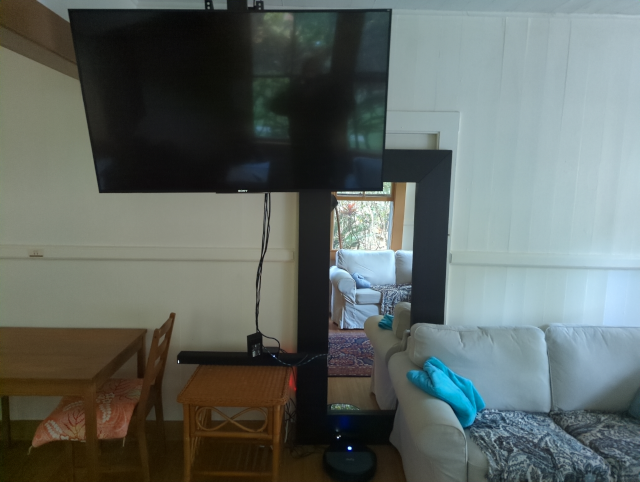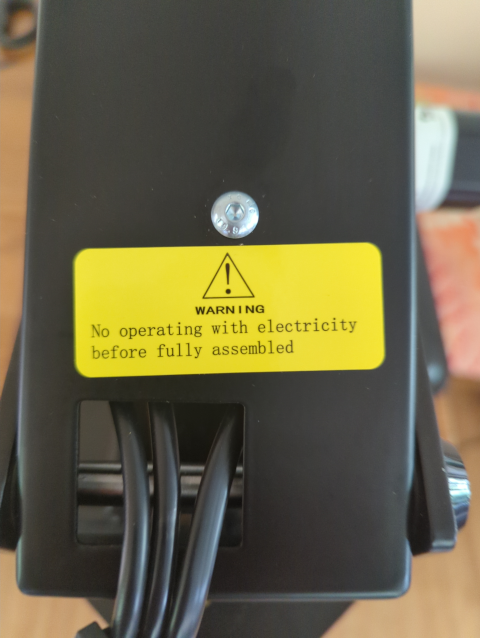
We don’t watch a lot of TV. When we do, it’s usually movies so it’s nice to have a fairly big screen. We put the TV on the wall of the room we were using as a living room, but since we switched the living room and bedroom and put the bed against the wall where we’d mounted the TV, we needed to move the TV.
The problem is that there is a dearth of open wall space in the house. That’s mostly because there are a lot of windows, which is a good thing, but we didn’t want a big TV dominating our living room and taking up precious wall space. So we found a mount (Topsky TV02.01) that would let us mount the TV on the ceiling and then allow it to fold down and rotate to face the room when we want to watch.

It’s a really nice idea, and the mechanism is well built (the company makes motorized standing desks) but the execution is pretty sloppy. The instructions fail to point out that — when stowing the TV — it folds up before it rotates back to the home position, which means it needs a lot of extra space. To make matters worse, there’s a big scary sticker on it warning not to plug it in until after it’s installed, so there’s no way to know about their poor software design until it’s too late.

There were other little problems, too. For example, the very heavy unit is designed to mount with keyhole-style lag bolts, but such bolts must have washers or they will inevitably fail. The supplied washers, though, are too big to fit through the keyhole, so one must put in two of lag bolts without washers, then lift the 30 pound bracket overhead, engage the lag bolts with the keyholes, then install two non-keyholed lag bolts (with washers), then remove the first two lag bolts (weakening their hold on the ceiling) and re-install them with washers. All while working on a ladder and reaching overhead.
Then we discovered that, even though we have an electrical receptacle directly under the installation point, the power cord is far too short to reach the mount. Remember, this mount is intended to be installed on the ceiling but with a cord that isn’t long enough to reach an outlet near the floor. (The TV power cord isn’t long enough, either, but I don’t think it’s fair to expect Sony to have anticipated their set being mounted on the ceiling).
So it’s installed, but you can see the ugly cables, power supplies, and a power strip hanging down from it. I’m also afraid that the mount will damage the TV if anyone tries to raise the TV without first rotating it to the home position. If you were mounting a very small TV (ours is 55”, which isn’t huge by today’s standards) and you have an outlet conveniently located on or near the ceiling and you don’t mind spending extra time manipulating bolts over your head, it’s a workable solution. (I suspect that 95% of installers just leave out the washers — at their peril.)
I think the solution will be to mount the mount’s power supply, the TV power supply, and our set-top box on the back of the television. Then we can run a long extension cord up the wall, plus an HDMI-ARC cable down the wall to our soundbar. But, really, that’s a lot to put on the consumer just to save the manufacturer 10¢ of power cord.
—2p